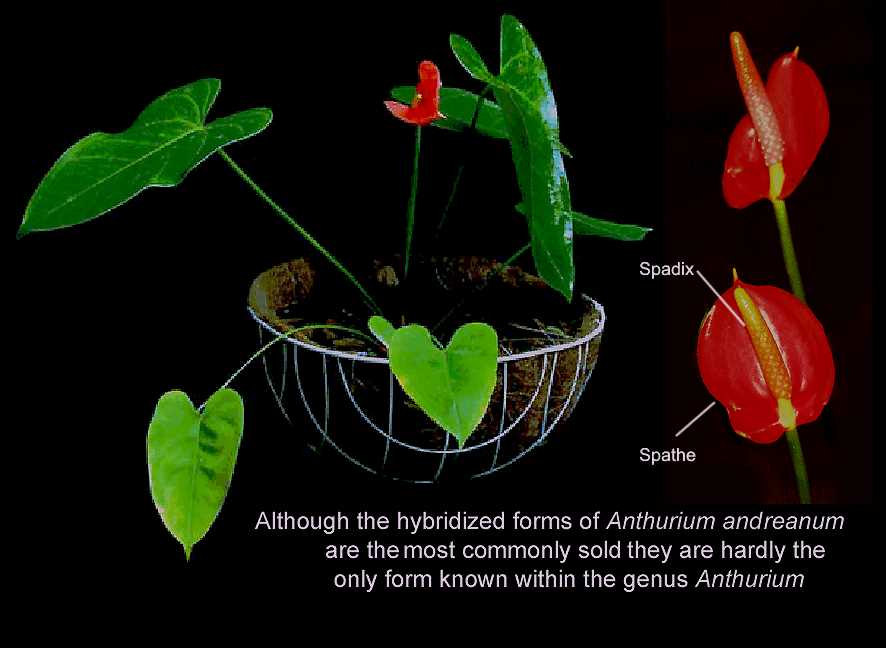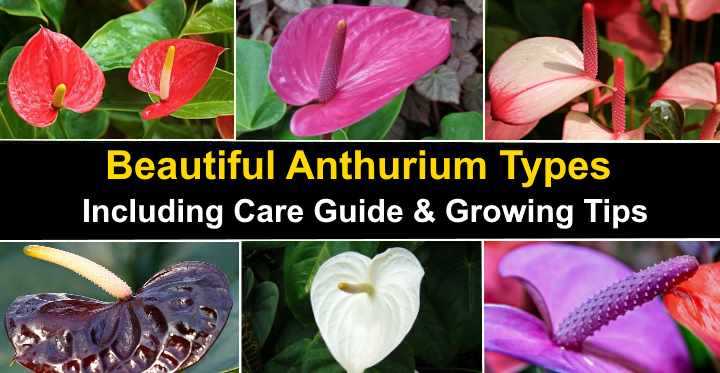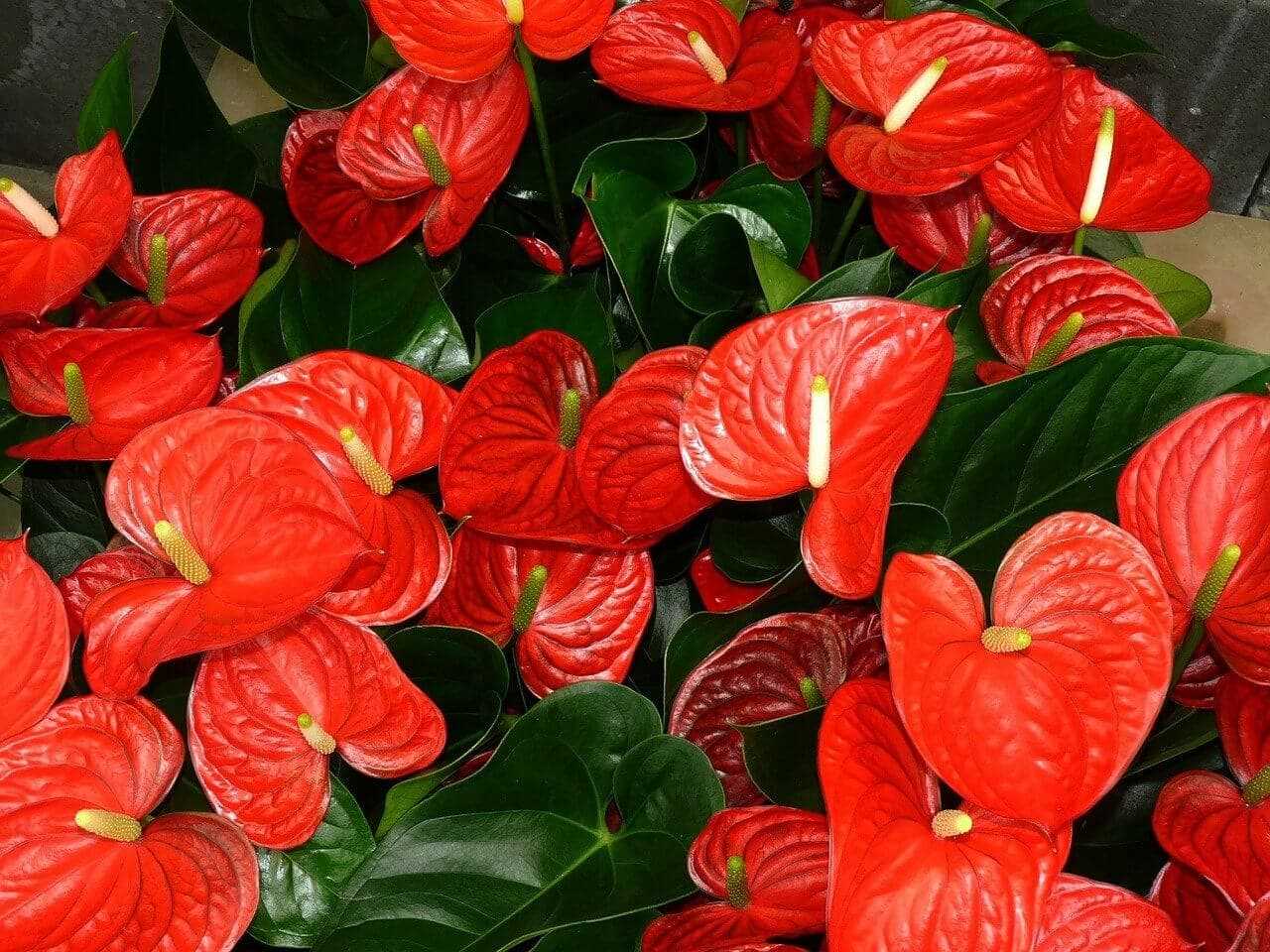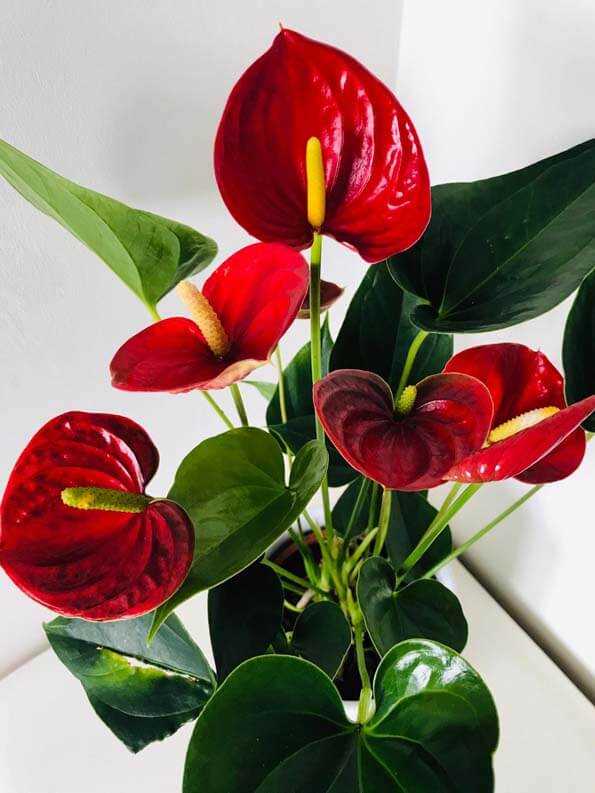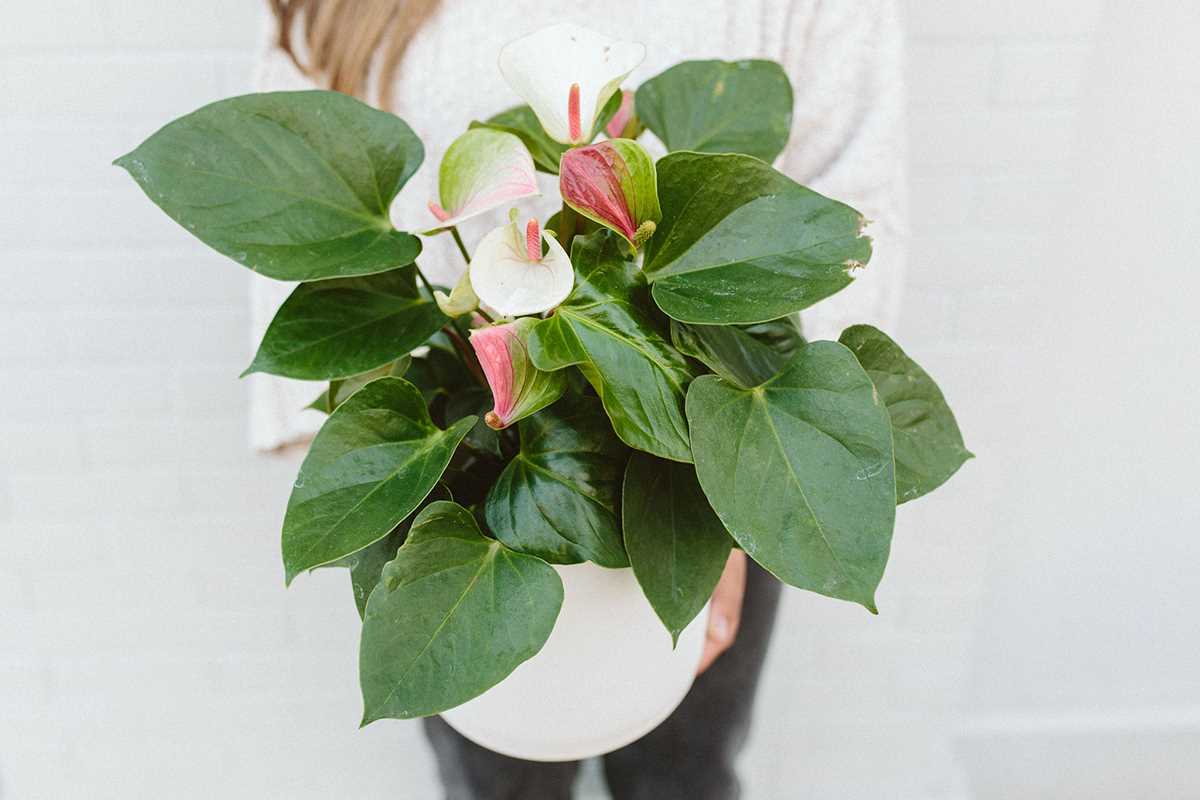- Anthurium (Anthurium): Care, Photos, Species – Your Ultimate Guide
- Introduction
- Care Tips
- Popular Anthurium Species
- Choosing the Right Anthurium for Your Home
- 1. Light Requirements
- 2. Watering Needs
- 3. Temperature and Humidity
- 4. Size and Growth Habit
- 5. Decorative Appeal
- Caring for Your Anthurium
- 1. Light and Temperature
- 2. Watering
- 3. Humidity
- 4. Fertilizing
- 5. Pruning
- 6. Repotting
- 7. Common Pests
- Tips for Watering Your Anthurium
- Providing the Right Temperature and Light for Your Anthurium
- Temperature
- Light
- Common Pests and Diseases of Anthurium
- Pests
- Diseases
- Popular Species and Varieties of Anthurium
- 1. Anthurium andreanum
- 2. Anthurium scherzerianum
- 3. Anthurium clarinervium
- 4. Anthurium crystallinum
- 5. Anthurium warocqueanum
- 6. Anthurium jenmanii
- 7. Anthurium regale
- 8. Anthurium veitchii
- Showcasing Anthurium: Stunning Photos and Arrangements
- 1. Beautiful Anthurium Species
- 2. Eye-Catching Anthurium Arrangements
- 3. Care Tips for Keeping Anthuriums Looking Their Best
- Q&A:
- What are the most common species of Anthurium?
- What are the care requirements for Anthurium?
- Can Anthurium be grown indoors?
- How often should I water my Anthurium?
- What type of soil is best for Anthurium?
- Can Anthurium be propagated?
- Video: Anthurium species tour, care, pollination, hybridization, and hybrids tour @potere_plants
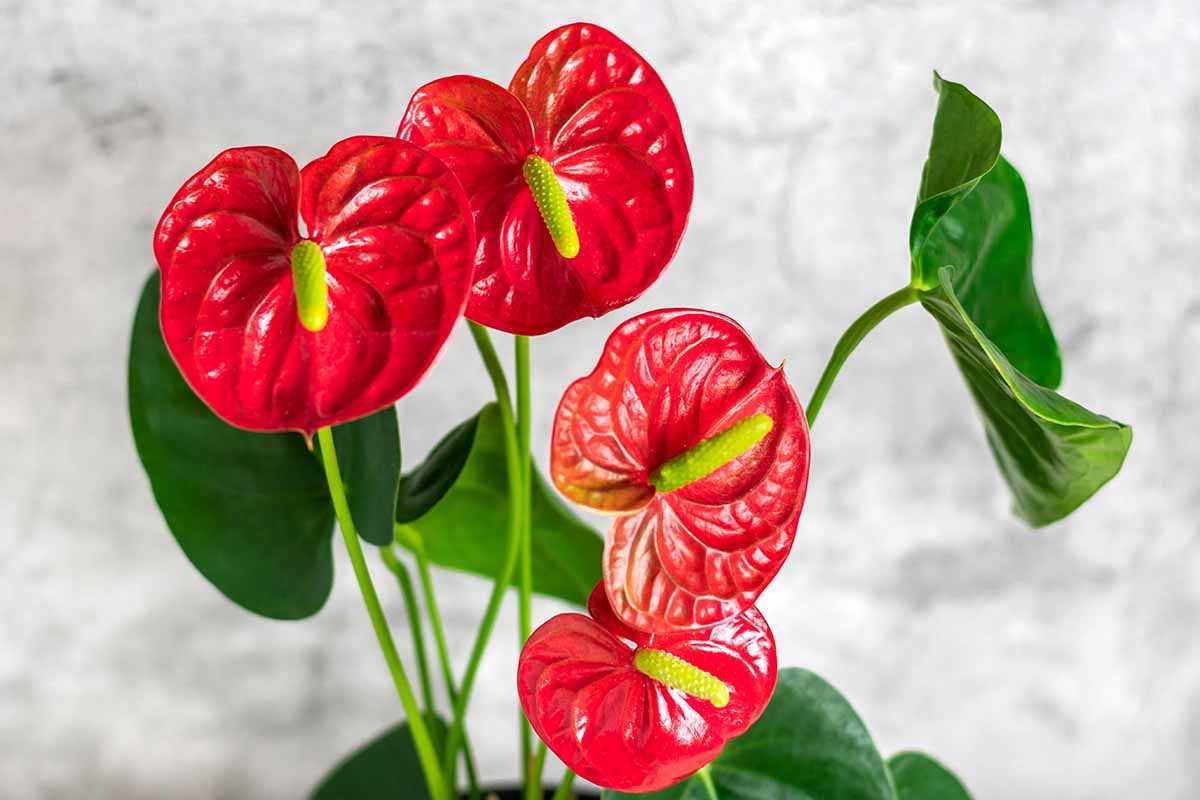
Welcome to our ultimate guide on Anthurium plants, also known as Anthurium! Anthuriums are a popular choice for both indoor and outdoor gardens due to their stunning foliage and unique flowers. In this guide, we will cover everything you need to know about Anthuriums, from caring for them to different species and how to showcase their beauty in photos.
Anthuriums are native to the tropical rainforests of Central and South America. They are part of the Araceae family, which also includes other popular houseplants like Peace Lilies and Philodendrons. One of the most striking features of Anthurium plants is their glossy, heart-shaped leaves that come in a variety of colors such as green, red, and variegated.
Another reason why Anthuriums are loved by plant enthusiasts is their spathes, which are modified leaves that surround the actual flowering part of the plant. These spathes can come in vibrant shades of red, pink, orange, or white, and can last for several weeks. The actual flowers of Anthuriums are tiny, inconspicuous blooms that are densely packed on a spadix, which is the spike-like structure in the center of the spathe.
In terms of care, Anthuriums are relatively easy to care for, making them suitable for both beginners and experienced gardeners. They prefer bright, indirect light and thrive in high humidity environments. Regular watering and well-draining soil are also essential for the proper growth of these plants. Additionally, regular fertilization and occasional pruning can help keep your Anthurium healthy and beautiful.
With their unique foliage and stunning flowers, Anthuriums are a fantastic addition to any plant collection or garden. In this ultimate guide, you will find all the information you need to successfully care for your Anthuriums, as well as tips on capturing their beauty through photography. So let’s dive in and explore the wonderful world of Anthuriums!
Anthurium (Anthurium): Care, Photos, Species – Your Ultimate Guide
Introduction
Anthurium, also known by its botanical name Anthurium, is a popular houseplant known for its stunning flowers and glossy leaves. With over 1000 species to choose from, Anthurium is a versatile plant that can thrive in a variety of conditions.
Care Tips
- Light: Anthurium prefers bright, indirect light. It can tolerate some shade, but direct sunlight should be avoided as it can scorch the leaves.
- Temperature: Anthurium prefers temperatures between 65°F and 80°F (18°C and 27°C). Avoid exposing the plant to temperatures below 60°F (15°C).
- Watering: Keep the soil consistently moist, but not soggy. Water the plant when the top inch of soil feels dry. Avoid overwatering as it can lead to root rot.
- Humidity: Anthurium prefers high humidity levels. To increase humidity, you can mist the leaves regularly or place a tray of water near the plant.
- Fertilizer: Feed Anthurium with a balanced, water-soluble fertilizer every month during the growing season (spring and summer). Reduce fertilization frequency in the winter.
- Pruning: Remove any yellow or damaged leaves to maintain the plant’s appearance. Prune back leggy growth to encourage bushiness.
Popular Anthurium Species
| Species | Description | ||||||||||||||||||||||||||
|---|---|---|---|---|---|---|---|---|---|---|---|---|---|---|---|---|---|---|---|---|---|---|---|---|---|---|---|
| Anthurium andreanum | This species is known for its vibrant flowers, which come in various colors such as red, pink, and white. It is also called the flamingo flower. | ||||||||||||||||||||||||||
AnthuChoosing the Right Anthurium for Your Home
When it comes to choosing the right Anthurium for your home, there are a few factors to consider. Anthurium plants come in a variety of species, each with its own unique characteristics and care requirements. Here are some key points to keep in mind: 1. Light Requirements
2. Watering Needs
3. Temperature and HumidityAnthuriums thrive in temperatures ranging from 60-85°F (15-29°C). They prefer a relative humidity of 50-60%, so misting the leaves or using a humidifier can be beneficial, especially in drier environments. 4. Size and Growth Habit
Consider the size and growth habit of the Anthurium plant. Some species, like Anthurium crystallinum, can grow quite large and require more space. Others, like Anthurium clarinervium, have a more compact growth habit, making them suitable for smaller areas. 5. Decorative AppealLastly, consider the decorative appeal of the Anthurium plant. Some species, like Anthurium andreanum, are known for their vibrant flowers and glossy leaves, making them a popular choice for ornamental purposes. Others, like Anthurium clarinervium, have unique leaf patterns that make them stand out. By considering these factors, you can choose the right Anthurium plant that suits your home’s lighting conditions, care preferences, and aesthetic preferences. Whether you go for a show-stopping flower or a striking leaf pattern, Anthuriums are sure to add beauty and elegance to any indoor space. Caring for Your Anthurium
Anthurium plants are beloved for their vibrant, heart-shaped flowers and glossy foliage. With the right care, your anthurium can thrive and provide you with beautiful blooms for years to come. Here are some tips on how to care for your anthurium: 1. Light and TemperatureAnthurium plants thrive in bright, indirect light. Place your anthurium in a well-lit spot, but avoid direct sunlight as it can damage the leaves. The ideal temperature for anthuriums is between 60-85°F (15-29°C). Keep them away from drafts and extreme temperatures. 2. WateringAnthuriums like to be kept evenly moist, but not wet. Water your anthurium when the top inch of the soil feels dry to the touch. Avoid overwatering, as it can lead to root rot. On the other hand, don’t let the soil completely dry out, as anthuriums can be sensitive to drought. 3. Humidity
Anthuriums are native to humid tropical regions, so they thrive in a moist environment. Increase the humidity around your plant by placing it on a tray filled with pebbles and water. Misting the leaves with water every few days can also help maintain humidity. 4. FertilizingFeed your anthurium with a balanced, water-soluble fertilizer every 2-3 months during the growing season (spring and summer). Follow the manufacturer’s instructions for the proper dosage. Avoid fertilizing in winter when the plant is in its dormant period. 5. PruningPrune your anthurium to maintain its shape and remove any dead or yellowing leaves. Use clean scissors or pruners to make clean cuts. Avoid cutting into the stem, as it can cause damage. 6. RepottingRepot your anthurium every 2-3 years to refresh the soil and give the roots room to grow. Use a well-draining potting mix and a pot that is slightly larger than the current one. Be gentle when removing the plant from its old pot to avoid damaging the roots. 7. Common PestsAnthuriums can be susceptible to pests such as aphids, mealybugs, and spider mites. Inspect your plant regularly for any signs of infestation, such as sticky residue, white webbing, or small insects. Treat any infestations promptly with organic insecticidal soap or neem oil. By following these care tips, you can keep your anthurium healthy and vibrant. Enjoy the stunning blooms and lush foliage of your anthurium plant! Tips for Watering Your AnthuriumProper watering is crucial for the health and growth of your Anthurium plant. Here are some tips for watering your Anthurium:
Remember, it’s always better to underwater your Anthurium plant than to overwater it. With proper watering and care, your Anthurium will reward you with its beautiful blooms and healthy foliage. Providing the Right Temperature and Light for Your AnthuriumProper temperature and lighting conditions are essential for the healthy growth and vibrant appearance of your Anthurium plant. Here are some guidelines to ensure you are providing the right environment for your plant: TemperatureAnthurium plants thrive in warm temperatures between 60°F (15°C) and 90°F (32°C). It is important to keep the plant away from drafts, as they can cause temperature fluctuations and stress the plant. Avoid placing the Anthurium near doors, windows, or vents that can expose it to cold drafts. If the temperature drops below 60°F (15°C), the plant may experience stunted growth and develop yellowing leaves. On the other hand, temperatures above 90°F (32°C) can cause the leaves to wilt and the plant to become dehydrated. LightIndirect, bright light is ideal for Anthurium plants. They can tolerate some direct morning or evening sun, but direct afternoon sun can scorch the leaves. If the leaves appear to be bleached or have brown spots, it may be a sign that the plant is receiving too much direct sunlight. Place your Anthurium near a north or east-facing window where it will receive bright, indirect light for several hours a day. If the light in your home is insufficient, you can supplement it with artificial light using a fluorescent or LED grow light. It’s important to rotate your Anthurium every few weeks to ensure that all sides of the plant receive adequate light. This will help promote even growth and prevent the plant from leaning towards the light source. Remember, every Anthurium is unique and may have slightly different temperature and lighting requirements. Be sure to observe your plant closely and make adjustments as needed to provide the optimal conditions for its growth and well-being. Common Pests and Diseases of AnthuriumPests
Diseases
Note: Regularly inspect your anthurium plants for pests and diseases, and take appropriate measures to prevent and treat any issues that arise. Proper care, including maintaining good air circulation, avoiding overwatering, and providing adequate light and humidity, can help prevent many pest and disease problems. Popular Species and Varieties of AnthuriumAnthurium is a diverse genus that consists of over 1000 species. Each species has its own unique characteristics, making the Anthurium plant family quite fascinating for plant enthusiasts. Here are some popular species and varieties of Anthurium: 1. Anthurium andreanumAlso known as Flamingo Lily, Anthurium andreanum is one of the most common species of Anthurium. It is easily recognized by its heart-shaped leaves and bright, colorful spathes (modified leaves). The flowers range in color from red, pink, white, and even green. It is a popular choice for indoor decoration due to its vibrant blooms. 2. Anthurium scherzerianumCommonly known as the Laceleaf or Pigtail Anthurium, Anthurium scherzerianum is another popular species. Its spathes are usually bright red and wavy in shape, resembling a pigtail. The leaves are glossy and dark green. This species prefers bright, indirect light and high humidity. 3. Anthurium clarinerviumAnthurium clarinervium is a stunning species with large, velvety leaves that have prominent white veins. This species is often referred to as the Velvet Leaf Anthurium or Veined Anthurium. It is a tropical plant that requires high humidity and medium to bright indirect light. 4. Anthurium crystallinumThe Anthurium crystallinum, also known as the Crystal Anthurium, is a small species with beautiful velvety leaves that have a silver vein pattern. Its veins and undersides of leaves are silvery-white, while the upper sides are green. This species thrives in humid conditions and prefers medium light. 5. Anthurium warocqueanumThe Anthurium warocqueanum, commonly known as the Queen Anthurium or Queen Velvet Anthurium, is a large species with stunning, heart-shaped leaves that have a deeply veined pattern resembling a mosaic. The leaves have a velvety texture, giving it a luxurious appearance. This species prefers high humidity and bright, indirect light. 6. Anthurium jenmaniiAnthurium jenmanii is a species with elongated, shiny green leaves that have striking silver-colored veins. This species is often called the Giant Laceleaf Anthurium. It prefers bright, indirect light and high humidity to thrive. 7. Anthurium regaleThe Anthurium regale is a large species with enormous, heart-shaped leaves that have prominent veins. This species is highly sought after by plant collectors due to its stunning foliage. Anthurium regale requires high humidity, bright indirect light, and well-draining soil. 8. Anthurium veitchiiAnthurium veitchii, also known as King Anthurium, has elongated, lance-shaped leaves with a velvety texture. The upper side of the leaves is dark green, while the underside is a striking silver color. This species thrives in high humidity and bright, indirect light. These are just a few examples of the many fascinating species and varieties within the Anthurium genus. Each species offers unique characteristics and beauty, making them a popular choice for indoor plants or tropical gardens. Showcasing Anthurium: Stunning Photos and Arrangements
1. Beautiful Anthurium SpeciesThe Anthurium plant boasts a wide variety of captivating species, each with its unique charm. From the vibrant reds and pinks to the subtle greens and whites, Anthuriums come in a range of colors that are sure to catch anyone’s eye. Here are some stunning photos showcasing different Anthurium species:
2. Eye-Catching Anthurium Arrangements
Anthuriums are not only beautiful on their own but also make stunning additions to flower arrangements. Their unique shape, vibrant colors, and long-lasting blooms make them a favorite choice for floral designers. Here are some eye-catching Anthurium arrangements:
Anthuriums can be used in various floral designs, from weddings to everyday arrangements, and they always add a touch of elegance and charm. 3. Care Tips for Keeping Anthuriums Looking Their BestTo ensure that your Anthuriums continue to dazzle with their beauty, follow these care tips:
By following these care tips and showcasing your Anthuriums through stunning photos and arrangements, you can enjoy the beauty of these plants for years to come. Q&A:What are the most common species of Anthurium?The most common species of Anthurium are Anthurium andraeanum, Anthurium scherzerianum, and Anthurium clarinervium. What are the care requirements for Anthurium?Anthurium plants require bright, indirect light, well-draining soil, and regular watering. They also thrive in humid conditions and prefer temperatures between 65-85°F (18-29°C). Can Anthurium be grown indoors?Yes, Anthurium plants can be grown indoors. They are popular houseplants due to their attractive foliage and flowers. How often should I water my Anthurium?Anthurium plants should be watered when the top inch of soil feels dry. It is important not to overwater the plant as this can lead to root rot. What type of soil is best for Anthurium?Anthurium plants prefer well-draining soil that is rich in organic matter. A mix of peat moss, perlite, and orchid bark can be a good choice. Can Anthurium be propagated?Yes, Anthurium plants can be propagated through division or by collecting and planting seeds. Stem cuttings can also be rooted to create new plants. Video:Anthurium species tour, care, pollination, hybridization, and hybrids tour @potere_plants |


